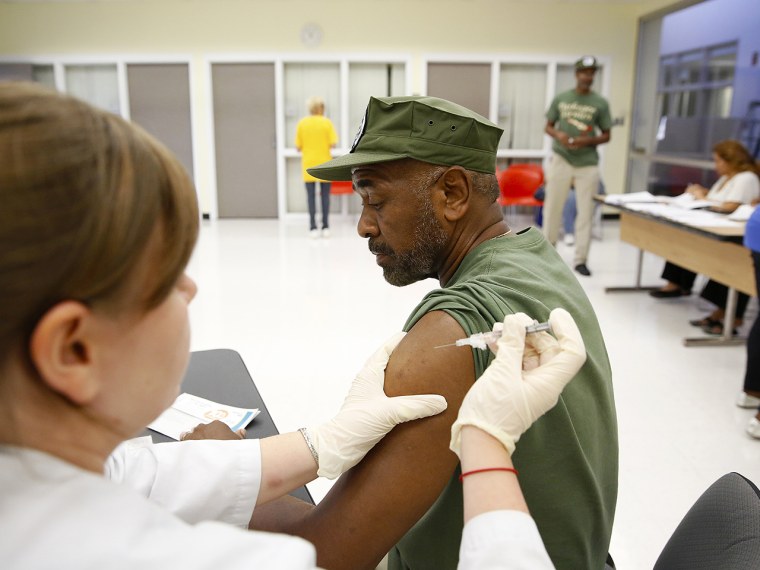A new flu season may be brewing in the U.S., just as the federal experts who usually monitor the severity and scope of influenza have been idled by a government shutdown.
America’s unofficial flu trackers say they’re seeing elevated reports of flu-like illness in a few states — California, for instance — and they worry about what will happen in coming days and weeks if officials at the Centers for Disease Control and Prevention remain on furlough.
“If this flu season hits early and we don’t have the most important national voice promoting vaccination, we will see unnecessary illnesses, some of which could be severe or fatal,” said John Brownstein, a Harvard Medical School epidemiologist who runs FluNearYou, a real-time flu tracking tool.
“And if it turns out this year’s flu causes more serious illness than normal, we may have a more difficult time detecting that quickly and warning the public about the increased risk.”
About 2 percent of the 50,000 people enrolled in FluNearYou reported flu symptoms as of this week, a nudge up from summer months, when well less than 1 percent were sick. At the height of last year’s early and harsh flu season, about 10 percent of FluNearYou folks reported illness, Brownstein said.
Google Flu Trends, another tracking tool, is reporting a slight rise in the nation’s flu activity as of Wednesday.
But those sites provide only a tiny portion of the flu picture in the U.S., nothing like the CDC’s robust FluView surveillance system that tracks the nation’s influenza ills. That site hasn’t been updated since the shutdown began on Tuesday, which means the latest data available to the public runs only through Sept. 21.
That’s to be expected with about 9,000 of the CDC’s nearly 13,000 employees on furlough, said CDC spokeswoman Barbara Reynolds. Although the agency is still collecting national flu data, the information won’t be analyzed or reported until the shutdown ends.
“We won’t have the national picture,” Reynolds said.
In addition, the CDC won’t be able to do the work to tell whether this year’s flu strains are susceptible to antiviral drugs such as Tamiflu used to treat them. And the agency won’t be able to say whether the 135 million doses of vaccine already produced this year are a good match for circulating strains of the virus.
The good news, from CDC’s perspective, is that vaccine is already widely available across the U.S.
“Our desire is not to imply in some way that there’s no vaccine available,” said Reynolds, noting that 73 million doses already have been distributed. Consumers can check availability of vaccine in their area with an online tracker.
CDC recommends that everyone aged six months and older should be immunized against the flu, which kills between 3,000 and 49,000 people a year, depending the strains circulating. Last year’s early and severe flu season killed 164 children. Flu season can start as early as October, but it typically peaks in the U.S. in January.
Typically at this time of year, CDC officials are talking up the benefits of vaccination in press releases and public appearances, monitoring early flu symptoms and organizing for the height of the season.
“Normally we would be right now planning for a big push,” Reynolds said. “That planning should be going on right now — and it’s not.”
JoNel Aleccia is a senior health writer with NBC News. Reach her on Twitter at @JoNel_Aleccia or send her an email.
